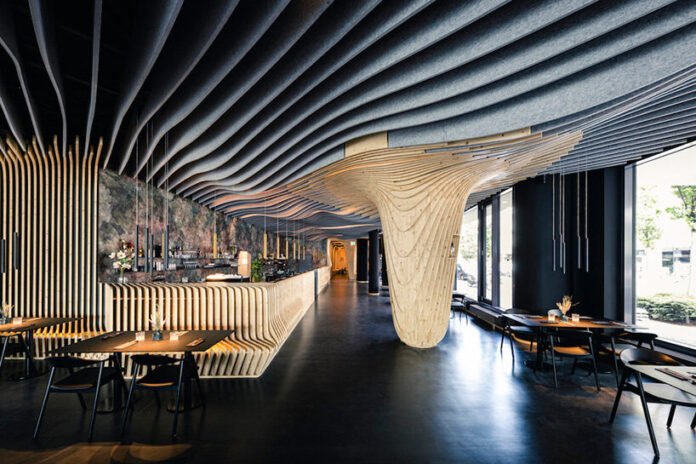Sound in spaces is an essential part of how we experience the world around us—one that matters on some level whether you’re at home, in a work environment, school, hospital, or publicly shared space. The significance of acoustics in architecture stands out through the influence on shaping the behavior of sound within a space in a manner that has a direct impact on both the comfort and the functionality of the space.
Top sound quality in classrooms to quiet surroundings in hospitals, it is easy to control the sounds in the room. Careful acoustical design manages sound absorption and transmission to make spaces welcoming, calming or inspiring. In the same way that visual design influences emotion, so does sound — which is why acoustics are such a key component to architectural triumph.
Table of Contents
Importance of Acoustics in Architecture
When she does, however, she writes about subjects that aren’t primarily visual but are deeply informed by what we hear as much as by what we see. The acoustic nature of a space can determine the way people interact with it, perceive the feeling of it, and use it to its potential. From a home and a school to an office to a hospital to theatre, the significance of acoustics in architectural structures& layout is massive! Health, comfort, communication and productivity are all profoundly affected by sound, and as a result acoustic planning and design have become essential elements in contemporary architecture.
What Is Architectural Acoustics?
A aspect of architectural acoustics is the design of a good music hall such as a concert hall. That includes how sound moves, how it is absorbed or reflected by materials, and how noise is contained (or transmitted) between rooms and throughout a building. The aim is to establish a space in which sound complements the function of the space, be it for tranquil contemplation, intense communication or immersive experiences.
1. Enhancing Functionality of Spaces

One of the main reasons we care about acoustics in architecture is because they can affect how well a space works. For instance, in an educational institution (school, university etcm) good acoustics with respectful reverberation times will enable teachers and lecturers to speak naturally without forcing themselves.
This helps students focus more and remember more. In office environments, too, acoustics affect how well workers can concentrate or work together. Noise pollution can be a significant distraction and stressor, and sound-friendly construction promotes better communication and reduces fatigue.
2. Supporting Health and Wellbeing

Noise is not just a nuisance — it can harm health and even shorten life. Studies have confirmed that high levels of noise can cause sleep disorders, high blood pressure, more stress, and/OR decreased ability to perform in cognitive tasks. Architectural acoustics has a vital role to play in mitigating negative effects by influencing the occurrence of sound, which depends on and around residential spaces. And subsequent studies have revealed that patients exposed to less noise in hospitals and health care settings generally recover more quickly, for example.
3. Creating Comfort in Residential Spaces

In domestic environments, acoustical well-being is intimately associated with life quality. Whether it’s a bedroom that needs to shield its sleepers from street noise or a living area that needs to be under the hoof of an upstairs above, good acoustical design is key. On the interiors more and more private houses are featuring insulated walls, ceilings with acoustic materials, doublegazed windows and acoustic isolation doors to ensure peace and privacy. This is especially relevant in city areas where urban noise can penetrate your home.
4. Facilitating Privacy and Confidentiality

Acoustics have to do with more than comfort; they also have to do with privacy. In corporate, medical or government buildings, confidentiality is critical. Bad acoustics may have sound-bleed that can be overheard by other than those intended to hear. 3 This may have legal, ethical, and professional ramifications. Through the use of sound-insulating materials and the design of a structure — such as locating meeting rooms away from high-traffic areas — architects are able to maintain speech privacy. Careful sound control also minimizes distractions in open-plan offices, which can allow sound to penetrate the workspace.
5. Preserving Cultural and Spiritual Experience

Sound is so tied to both emotional and spiritual quest. For places of worship, including churches, mosques and temples, the aim is to use acoustics as a means of instilling an aura of respect and solemnity. A space’s sacredness can be bolstered by the sound of a chant, the ring of a bell or the amplification of spoken word. Ancient structures already showed how much acoustics had been mastered historically. This was achievable due to the special properties of the amphitheatres, designed to enhance the sound without any electrical instruments as in the case nowadays. These cases underscore how fundamental sound has always been to our constructed environment.
6. Impact on Energy Efficiency and Sustainability
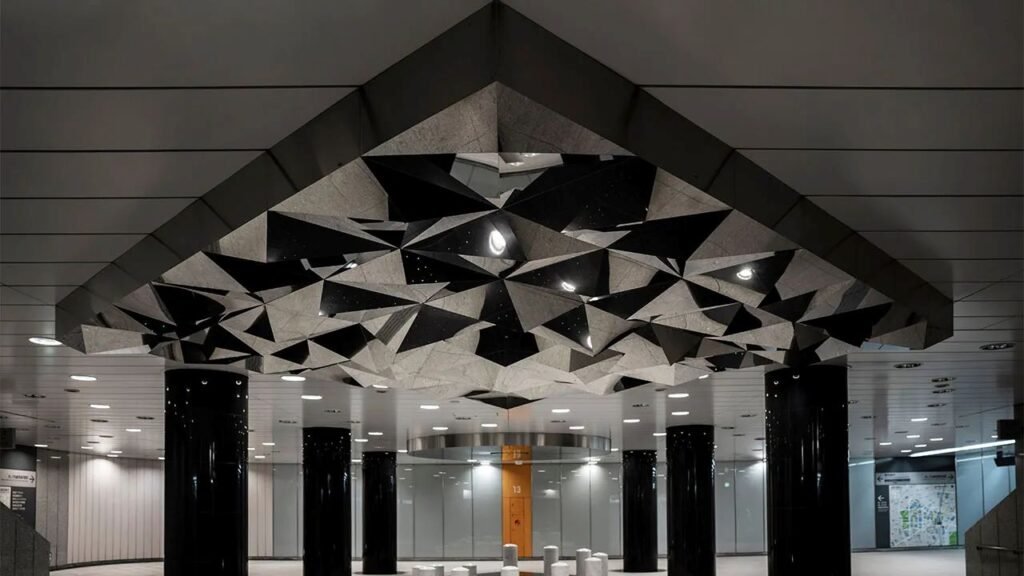
Some noise mitigation solutions also save energy, as it turns out. Double glazed glass and insulation in walls works not only to prevent sound from escaping from a building, but also to minimise heat loss. And as green design becomes more and more crucial, acoustic solutions that provide double duty — both noise reduction and energy savings— are especially important. Acoustic curtains, insulated panels, and carpeting can contribute to lower energy consumption and a comfortable and relaxed atmosphere. And that makes acoustics a key consideration in both green building design and its long-term economics.
7. Adapting to Urban Challenges
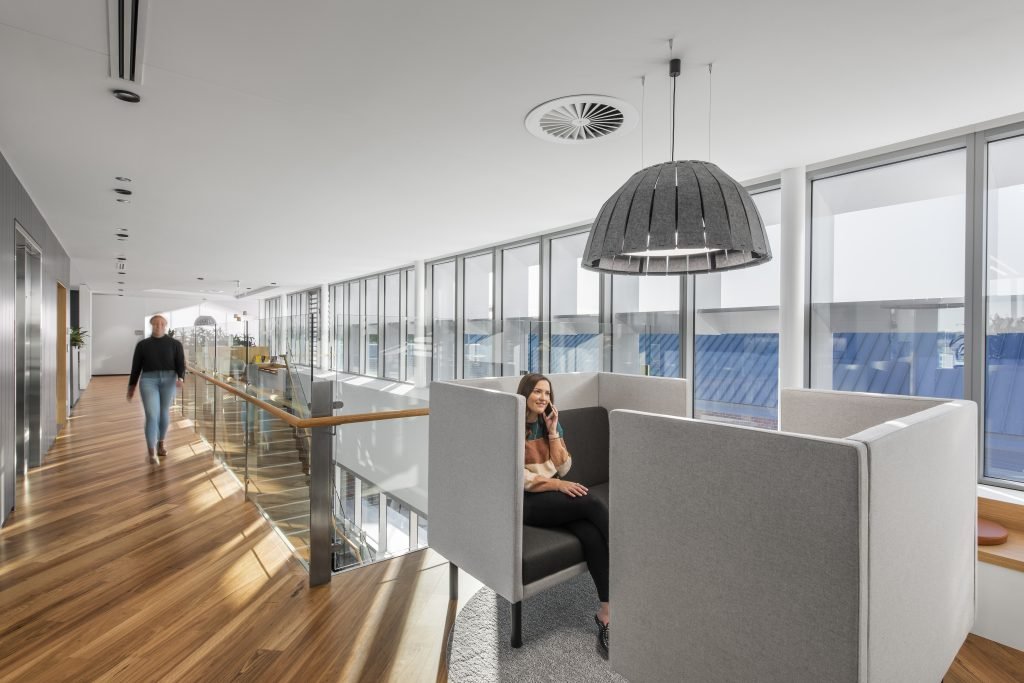
As these cities continue to get denser, even more the necessity for acoustical design. Urban architecture needs to deal with street noise, the sounds of construction and the general hum of city living. In those surroundings, good acoustics can make the difference between a space that feels chaotic and one that seems like a peaceful respite.
Sound architects may provide aid in combating noise in urban areas through panning sound barriers, buffer zones, alignment of architecture and placement of green such as walls. These design interventions not only reduce noise but also improve urban quality of life and mental health.
8. Acoustic Planning in Modern Architecture
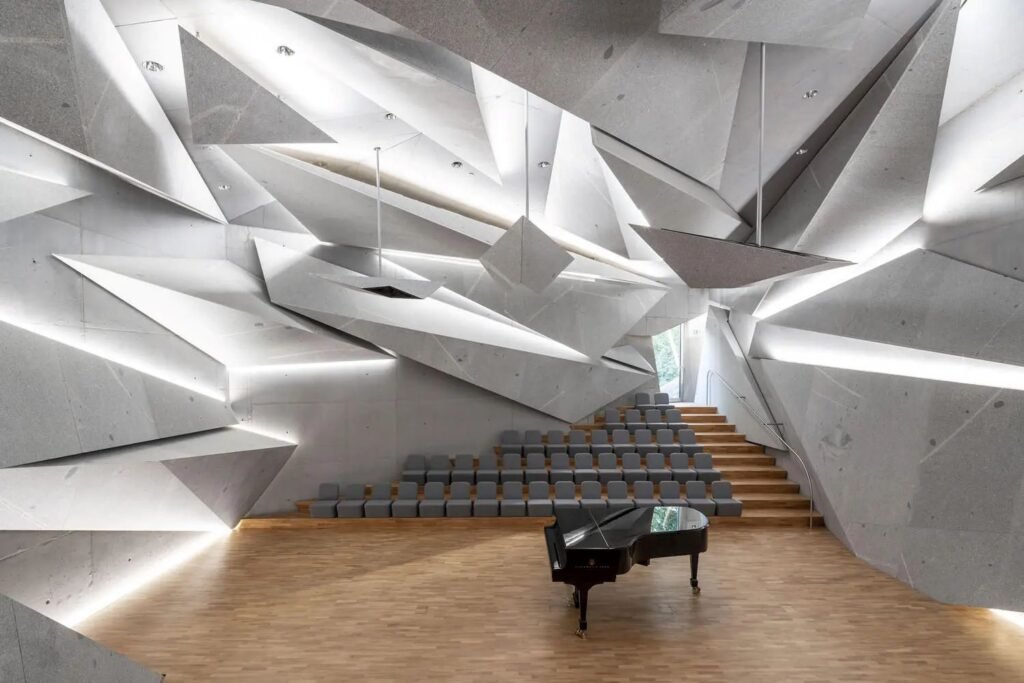
In architecture today, acoustics are not an afterthought but part of the earliest design stages. In most countries, building regulations enforce minimum standards for sound recording and reproduction quality which are above the minimum standards for professional fire and safety, and similar regulations mandate the kind of building construction, including the materials, that will comply with sound recording and reproduction standards for walls and ceilings, and so we have many kinds of materials and both absorbent and reflective surfaces to cover them.
9. Promoting Productivity in Workspaces
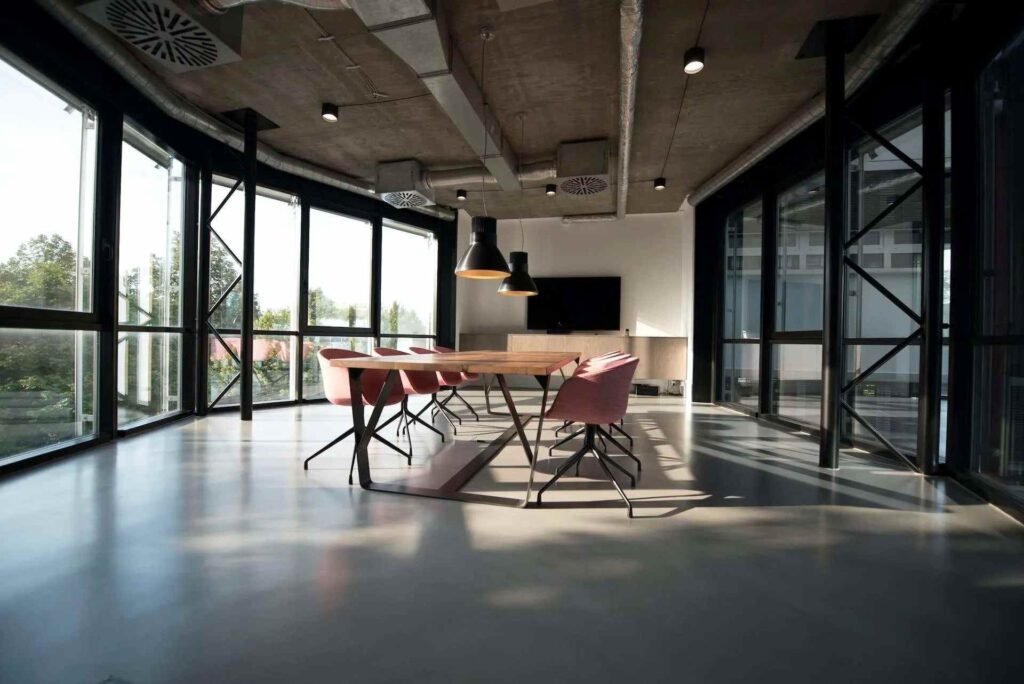
After all, it’s not what it used to be – office design has come on leaps and bounds, not least with the introduction of open-plan designs and and the new norm of home and office hybrid working. Collaborative open areas, for example, encourage teamwork, but present noise challenges too.
Without appropriate acoustic solutions, noise may rapidly become unbearable during discussions, telephone calls and even as you’re strolling around. Acoustic panels, suspended ceiling systems, and sound absorbent furnishings are among the many ways to reduce noise and increase clarity in these types of spaces.
Conclusion
Acoustics are paramount to an architect’s designs but not only in regards for concert halls and radio studios. It shapes how we live, learn, heal, work and how we feel in a space. With careful attention to acoustical design at every phase of a building’s life, architects can design more comfortable, healthy, functional, and private settings. In a world that’s becoming ever louder and busier, sound is more important than ever.
From the hush of a bedroom to the resonance of a lecture hall to the intimacy of a conference room, acoustics define the way we experience our world in profound ways. As architecture changes, we need to continue to rethink the way sound defines the places in which we live, work and socialise.
Read Next

